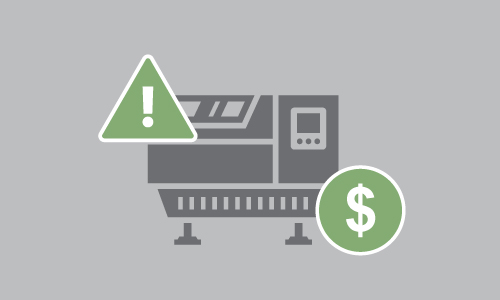For many manufacturing plants, adhering to strict environmental regulations means having to allocate a large portion of the operating expenses on VOC abatement technologies.
Therefore, choosing the right equipment to optimize efficiency is the key to reducing operating cost and improving your bottom line.
Key Considerations When Selecting Your VOC Abatement Equipment
You can improve operational efficiency and reduce cost by choosing the appropriate VOC abatement system. Here are some key considerations:
- List out the types and extent of the air pollutants your plant emits to help determine the most effective abatement equipment for the purpose. You should ensure that the system can handle all the VOCs emitted in the manufacturing process.
- Estimate the number of days and the hours per day that the abatement equipment needs to operate. System design and the choice of technology can differ based on time requirements for operation.
- Confirm your air permit’s VOC destruction percentage, which can affect the operating temperature, the amount of catalyst needed, and chamber designs.
- Determine the temperature and exhaust rate for each emission point, which can affect how you size the unit and dampers, as well as the need for ductwork insulation. Designing the system to accommodate these factors can optimize your energy usage and operational efficiency.
- Consider the ability of the system to capture the heat emitted by the equipment and reuse it for either the abatement process or other functions in the plant.
- Compare the energy cost of different systems, electricity usage, and fuel type (e.g., propane, natural gas, etc.) The process of destroying VOC requires a lot of heat, so energy cost can have a significant impact on a system’s operating cost.
- Take your geographic location into account, which can affect how you configure exterior materials, AC requirements, and fan sizing to optimize operational efficiency and minimize cost.
- Consider your growth expectations for the next three to five years and plan for necessary facility expansion to avoid costly upgrades later.
Examples of Cost-Effective VOC Abatement Equipment
Technologies have been evolving to increase operational efficiency and lower the operating cost of VOC abatement equipment. Here are some of the most cost-efficient solutions:
- Regenerative Thermal Oxidizers (RTOs): these energy-efficient systems can get rid of more than 99% of VOCs produced in a factory by using a simple thermochemical reaction to destroy the pollutants. The only by-products of the process are carbon dioxide, water, and usable heat, making it an environmentally-friendly option.
- Catalytic Oxidizers: these systems also destroy VOCs through a heating process. They also use a catalyst in the combustion chamber, which helps reduce the temperature required to complete the process. The thermal transfer technology employed in the process makes this equipment a cost-effective choice.
- Rotary Concentrator System: these hybrid VOC abatement systems remove and destroy VOCs through a process that uses exhaust air stream at or near ambient temperature. They remove air pollutants from the air stream with a rotating wheel before sending them to an RTO.
There are many factors that can affect your selection of VOC abatement equipment. Evaluate all the different elements in your manufacturing processes, environment, and business plan so you can implement the right mechanisms to effectively lower emissions and reduce the cost of abatement.
Sources
The Most Effective VOC Abatement Technologies Available Today
How to Select the Right VOC Abatement System for Your Operation
How to Select the Right VOC Abatement System for Your Operation (Part 2)




